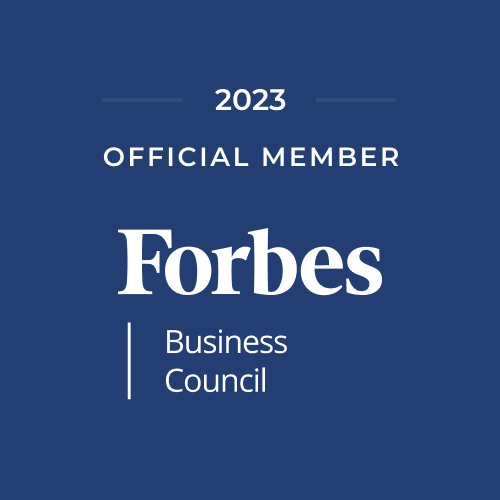Power Reads: 5 Interesting Articles That Will Help You This Week
/Each week, I select a few articles that rise above the fray and hopefully help you on your journey in leadership and the CRE world. They pull from one of four "corners": corporate real estate, technology, management science and anything positive. Each day we can become a better version of ourselves.
1. They Won’t Go Just To Go: How Leaders Can Coax Their Top Employees Back To The Office
Getty Images
We can examine one class of workers and have a pretty good understanding of what work will be like for them in Q1 2022: knowledge workers who are at the top of their game. These are top consultants, senior law partners, top tech executives and leading corporate salespeople. As a class, these superstars really move the needle in their respective marketplaces. They’ve risen to the top of their professions and are viewed as leaders. I bet most of them are quoted in the media constantly and are seen as masters of their universe.
What do they all have in common? They control their schedule. They get compensated, bonused and recognized based on their outputs — not their time in the office. Early in a career, we trade our time for money. At the rockstar level, they trade their value for money. They will not go to the office just to go.
Everyone in leadership assumes these superstars are doing the right thing for the company no matter where they are, and hey, if they want to walk the dog or do laundry on Tuesday afternoon, no problemo. Our top producers are superstars who get large dollops of corporate benevolence and vast amounts of schedule and locational flexibility.
2. If Work Is Going Remote, Why Is Big Tech Still Building?
DAVID PAUL MORRIS/BLOOMBERG/GETTY IMAGES
One year later, Walesh is feeling something surprising: optimism. The city is—at least, in some imagined post-pandemic future—booming. Speaking earlier this month, she quickly ticked off roughly a dozen major developments that remain on track, a number of which had come into focus mid-pandemic.
That didn’t factor in Google, which, after a six-month delay, will be up for a final city council vote in May. Altogether, the projects amount to millions of square feet of new office space and capacity for thousands of workers in downtown San Jose.
And so, looking at decades of growth in the pipeline, Walesh was skeptical of the predictions of her city’s and region’s impending demise. The death of Silicon Valley, she believes, has been exaggerated. “It always is,” she says.
3. Workplace Must Adapt Or Die, But Evolution Was Never Optional
Courtesy of Matthew Millman
A focus group of 32 office owners, occupiers and placemakers conducted by Cushman & Wakefield along with George Washington University’s Center for Real Estate and Urban Analysis, revealed that above all, flexible and adaptable work environments are the defining feature of future workplaces.
In their report, Workplace Ecosystems of the Future, the authors found that though the focus group participants rated the work-from-home experience as “better than expected” with high productivity levels, many workers are missing the culture and collaboration that drives innovation in in-person environments.
“These testimonies and research findings provide further evidence that people still need a space to collaborate, innovate and stay connected — and the office provides that,” Cushman & Wakefield Global Head of Occupier Research David C. Smith said in a press release. “The pandemic has given us the opportunity to test remote work. Moving forward, occupiers will need to strike the right balance between remote and in-office work, and our research indicates a need for fundamental change in the culture and flexibility of the real estate industry in order to remain relevant in a post-pandemic environment.”
4. Slow Down and Write Better Emails
HBR Staff/ Robbie Goodall/Pexels/Getty Images
Not so long ago, we shared information with our colleagues across a table, listening to people’s ideas and responding accordingly. Today, so many of those exchanges happen in written (or typed) form — think email, text, IM — meaning that listening in its traditional sense has been replaced by reading text on a screen.
The problem with this, according to the linguist Naomi Baron, is that we comprehend less when we read on a screen than we do when we read print; we devote less time to reading something in full, and tend to skim and search for key takeaways. And when it’s our turn to reply to a message, we feel so burdened by the volume of emails we have to write that we end up sending sloppy, terse, or confusing responses.
Given how central reading and writing comprehension is to our virtual lives, it’s time to remind ourselves what good communication looks like. As I describe in my book, Digital Body Language, reading carefully is the new listening, and writing clearly is the new empathy.
5. HBCUs Are At The Center Of CRE's Push To Diversify. Schools Hope They Keep Pushing
Historically Black Colleges and Universities across the nation are experiencing a surge in interest this year as much of the business world, including the commercial real estate industry, has vowed to do more to promote inclusion.
The incidents that sparked this interest — the killing of George Floyd last May and the unrest that followed — have created a seismic shift, with companies eager to build their talent pipeline by engaging with, and donating to, the nation's 101 HBCUs and other minority-led higher educational institutions.
But as the memories of last summer begin to fade, some involved with the schools are concerned that so, too, will corporate America’s interest.
Your success blesses others. I wish you a great a hugely impactful week!







